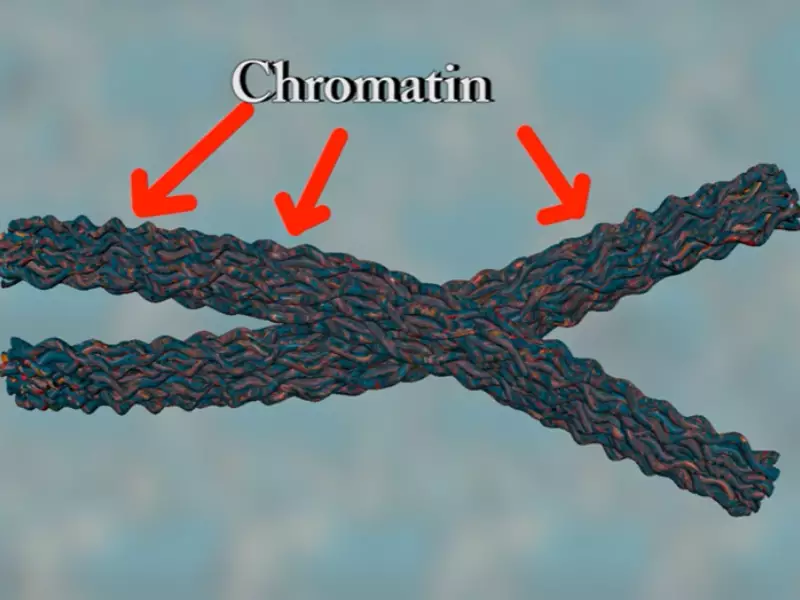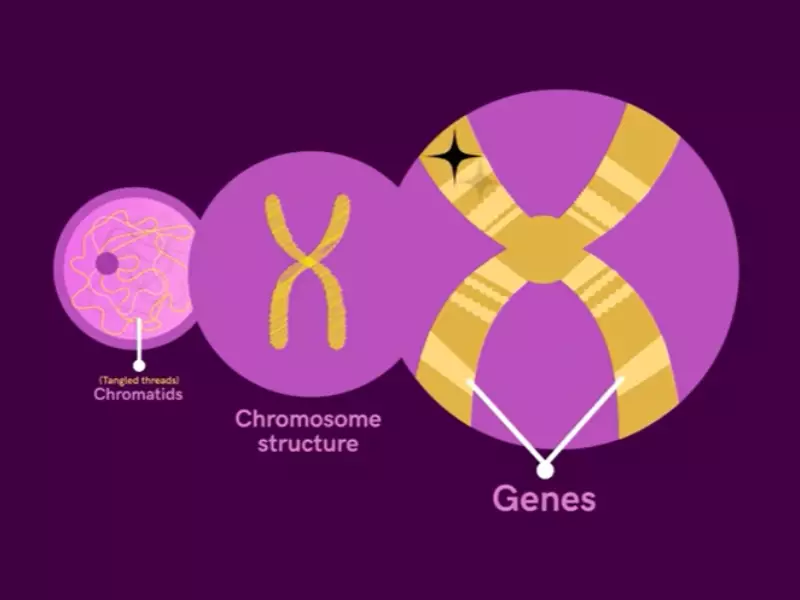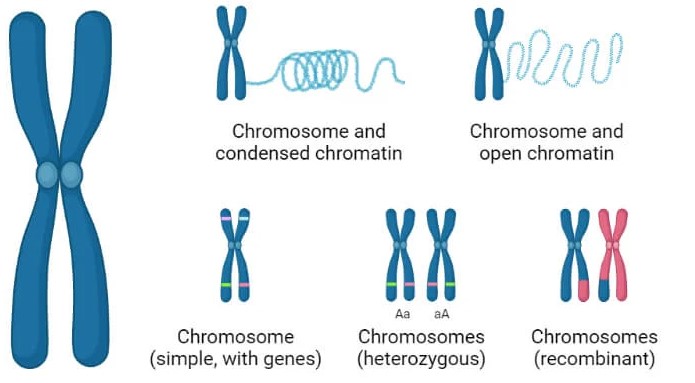The intricate architecture of the cell’s nucleus is a marvel of nature, housing the vast repository of genetic information that dictates everything from the color of our eyes to our susceptibility to certain diseases. At the heart of this complex system lie chromatin fibers and chromosomes, two critical structures that play pivotal roles in the organization, regulation, and expression of our genes. Despite their interconnected roles, significant differences between them are crucial for the proper functioning of the cell.
Chromatin fibers are long strands of DNA wrapped around proteins called histones, existing within the nucleus of a cell to compact and organize DNA into a more manageable form. Chromosomes, on the other hand, are tightly coiled structures formed from chromatin that become visible under a microscope during cell division. The primary difference between chromatin fibers and chromosomes lies in their structure and role during the cell cycle: chromatin fibers facilitate DNA accessibility for gene expression and replication, whereas chromosomes ensure accurate DNA segregation during cell division.
A deeper understanding of these components reveals the elegance of cellular mechanisms at play. Chromatin fibers serve not only as a packaging system but also as a dynamic entity that regulates gene expression and maintains DNA integrity. Chromosomes, embodying genetic information in a condensed form, are instrumental in the precise distribution of genetic material to daughter cells. This intricate dance between chromatin fibers and chromosomes is fundamental to life, underlying processes from growth and development to the maintenance of health and the avoidance of genetic diseases.

Basic Concepts
Cellular Genome
The cellular genome is the complete set of DNA within a cell, encompassing all the genetic instructions necessary for the growth, development, and functioning of an organism. DNA, or deoxyribonucleic acid, is a long molecule that contains our unique genetic code. It resembles a twisted ladder, with each rung consisting of paired nucleotides, and is packed within the microscopic confines of the cell nucleus.
Role of Genetic Material
- Inheritance: DNA is passed from parents to offspring, carrying the traits that define a species and individual characteristics.
- Function: It dictates cellular functions by providing the instructions for building proteins, the workhorses of the cell that carry out most life processes.
Genes and Expression
Genes are segments of DNA that code for proteins or functional RNA molecules. Their expression — the process by which the instructions in our DNA are converted into a functional product — is a tightly regulated process that allows cells to respond to their environment and maintain homeostasis.
Significance of Gene Regulation
- Adaptation: Allows organisms to adapt to environmental changes by modulating the expression of genes.
- Development: Guides the development of an organism from a single cell into a complex, multicellular individual.
- Health: Errors in gene expression can lead to diseases, making understanding this process crucial for medical science.
Chromatin Fiber
Definition and Structure
Chromatin fiber consists of DNA wrapped around histone proteins, forming a compact structure that fits within the cell nucleus. This organization not only compacts DNA but also plays a key role in regulating access to genetic information.
Role of Histone Proteins
Histone proteins act as spools around which DNA winds, and their chemical modification can lead to changes in gene expression. This dynamic structure allows cells to pack nearly 2 meters of DNA into a nucleus just a few micrometers in diameter.
Functions
Chromatin fibers serve several essential functions within the cell:
- DNA Packaging: Compacts DNA to fit within the nucleus, protecting it from damage.
- Gene Regulation: Modulates access to DNA, influencing which genes are turned on or off.
- DNA Protection: Shields DNA from damaging agents, contributing to genome stability.
Types
Chromatin can be classified into euchromatin and heterochromatin, based on its compaction level and function:
- Euchromatin: Less condensed, associated with active gene expression.
- Heterochromatin: More condensed, often found in regions of DNA that are not being actively transcribed.
These types highlight the dynamic nature of chromatin, which can change states to regulate gene accessibility.
Chromosome
Definition and Composition
A chromosome is a single, continuous piece of chromatin that contains many genes, regulatory elements, and other nucleotide sequences. Chromosomes become highly compacted and visible under a microscope during cell division, ensuring the accurate distribution of genetic material to daughter cells.
Functions
Chromosomes play several critical roles in cellular functions:
- Genetic Inheritance: Carry genes from one generation to the next.
- Cell Division: Ensure accurate DNA segregation during mitosis and meiosis.
- Genetic Stability: Maintain the integrity of genetic information.
Number and Types
The number and types of chromosomes vary across species, providing insights into evolutionary relationships and genetic complexity:
- Number: Humans have 46 chromosomes, arranged in 23 pairs, while other species may have more or fewer.
- Types: Chromosomes can be categorized into autosomes, which do not determine sex, and sex chromosomes, which play a role in determining the sex of an organism (e.g., XX for females and XY for males in humans).

Key Differences
Structural Differences
The structure of chromatin fibers and chromosomes marks one of the most fundamental distinctions between these two entities. While both are essential components of genetic organization within the cell, their structural nuances significantly impact their functions and roles in genetic expression and cellular activities.
- Chromatin Fibers: These are less condensed and more spread out within the nucleus for most of the cell cycle. This spread-out structure is pivotal for allowing gene expression, as the less condensed DNA is more accessible to the machinery involved in transcription and replication.
- Chromosomes: In contrast, chromosomes represent chromatin that has been highly condensed and organized, particularly visible during the cell division phases. This high level of organization is crucial for the accurate segregation of DNA as cells divide, ensuring that each daughter cell receives an exact copy of the genetic material.
The physical differences between chromatin fibers and chromosomes are not just a matter of packaging but have profound implications for how genes are accessed, expressed, and inherited.
Functional Differences
The functionality of chromatin fibers versus chromosomes dives deeper into the biological significance of their structural differences.
- Chromatin Fibers: The main role of chromatin fibers in the cell involves regulating gene expression and DNA replication. By transitioning between more and less condensed states, chromatin fibers expose or hide different regions of DNA, influencing which genes are active at any given time.
- Chromosomes: The primary function of chromosomes is to ensure the accurate distribution of genetic material during cell division. Their highly condensed state during mitosis and meiosis facilitates the even splitting of genetic information, a critical process for the growth, repair, and reproduction of cells.
These functional disparities underline the versatility of DNA packaging within the cell, showcasing how structural changes align with specific cellular needs at various lifecycle stages.
Role in Cell Cycle
The cell cycle showcases distinct roles for chromatin fibers and chromosomes, highlighting their importance in cell division processes.
- During the interphase (the period of the cell cycle when the cell is not dividing), DNA exists primarily in the form of chromatin fibers. This state facilitates gene expression and DNA replication, as the genetic material is more accessible.
- As the cell prepares to divide, the chromatin condenses into chromosomes, a process that peaks during mitosis and meiosis. This transformation ensures that each daughter cell receives a complete set of chromosomes, a cornerstone of genetic fidelity and cellular function.
The behavior of chromatin fibers and chromosomes during the cell cycle not only supports cellular proliferation and renewal but also safeguards genetic integrity across generations.
Significance in Research
Genetic Studies
The study of chromatin fibers and chromosomes holds immense value in genetic research and the understanding of various diseases.
- Understanding Disease Mechanisms: Alterations in chromatin structure and chromosome organization can lead to genetic disorders and cancer. Research into these areas can uncover the molecular underpinnings of such diseases.
- Gene Regulation and Expression: Insights into how chromatin fibers influence gene expression have profound implications for developing therapies that target specific genes, offering potential treatments for genetic conditions.
This research is pivotal in unraveling the complexities of the genome, offering pathways to innovative treatments and a deeper understanding of life at the molecular level.
Molecular Biology Applications
Knowledge of chromatin fibers and chromosomes extends beyond basic science, enhancing molecular biology techniques and applications.
- Genetic Engineering: Techniques such as CRISPR-Cas9 leverage our understanding of chromatin accessibility and chromosome structure to edit genes with unprecedented precision.
- Diagnostic Tools: Chromosomal analysis is fundamental in prenatal screening and cancer diagnostics, where aberrations in chromosome number or structure can indicate the presence of disease.

Frequently Asked Questions
What are histone proteins?
Histone proteins are the core components around which DNA winds to form nucleosomes, the basic units of chromatin structure. They play a crucial role in the regulation of DNA by controlling its accessibility for transcription, replication, and repair, thereby influencing gene expression and cellular function.
How does chromatin structure affect gene expression?
Chromatin structure modulates gene expression by controlling access to DNA. The transition between open (euchromatin) and closed (heterochromatin) chromatin states determines the accessibility of genes to the transcription machinery. Euchromatin facilitates gene expression by allowing transcription factors to bind to DNA, while heterochromatin restricts access, effectively silencing genes.
Why are chromosomes important in cell division?
Chromosomes ensure the accurate segregation of genetic material during cell division. By condensing DNA into a compact form, chromosomes allow for the even distribution of genetic information to daughter cells during mitosis and meiosis. This process is critical for maintaining genetic stability and preventing abnormalities that can lead to diseases.
What is the difference between autosomes and sex chromosomes?
Autosomes are chromosomes that are not directly involved in determining the sex of an organism, while sex chromosomes are specifically involved in sex determination. Humans have 22 pairs of autosomes and one pair of sex chromosomes, with females having two X chromosomes and males having one X and one Y chromosome.
Conclusion
The dynamic interplay between chromatin fibers and chromosomes is a testament to the complexity and efficiency of cellular machinery. Understanding these structures sheds light on the fundamental processes that govern cell function, genetic inheritance, and organismal development. As the field of genetics continues to evolve, so too does our appreciation for the intricate mechanisms that maintain the delicate balance of life at the molecular level.
This exploration into the differences between chromatin fibers and chromosomes not only highlights the importance of these structures in the realm of biology but also underscores the continual need for scientific inquiry and research. By delving into the minutiae of cellular function, we unravel the mysteries of life itself, paving the way for advancements in medicine, genetics, and biotechnology that promise to transform our approach to health and disease.
